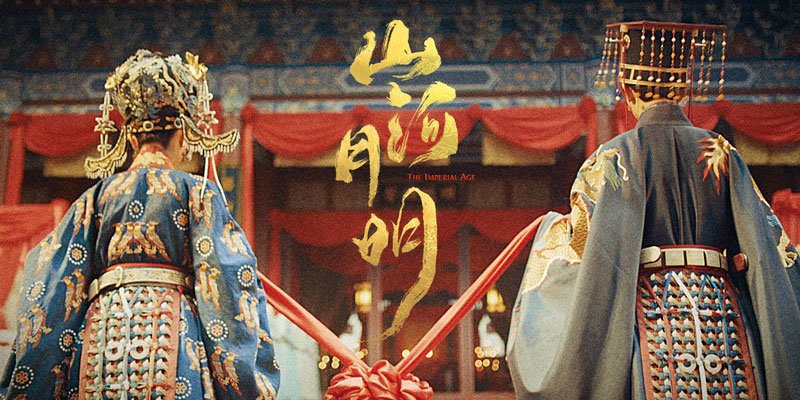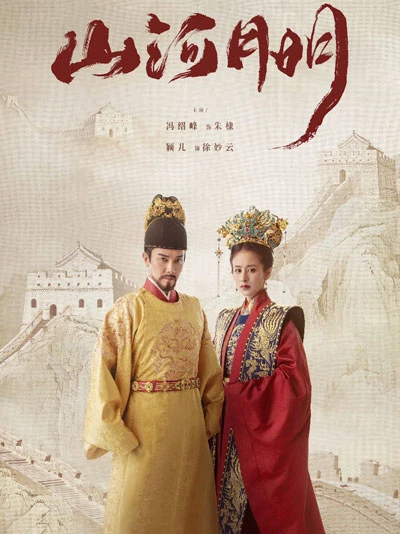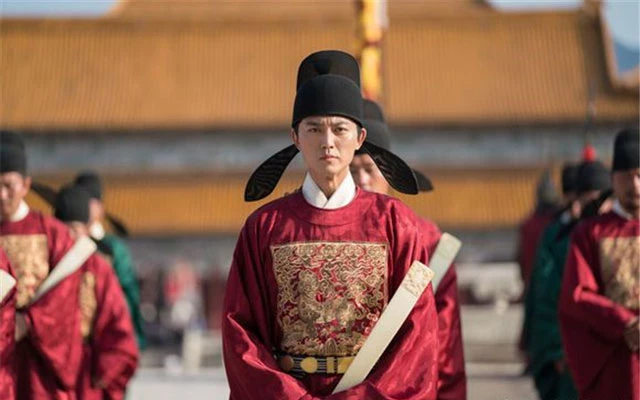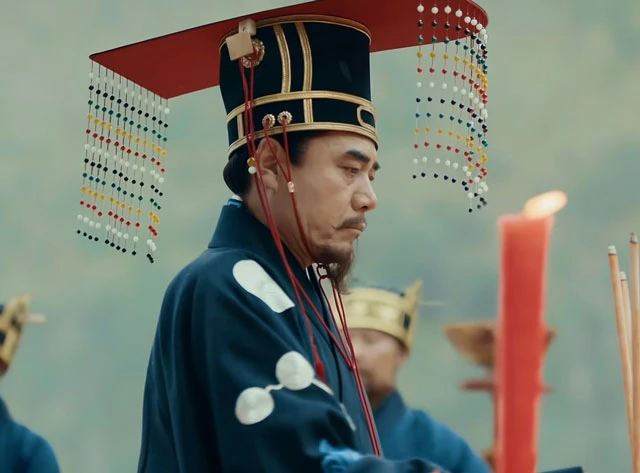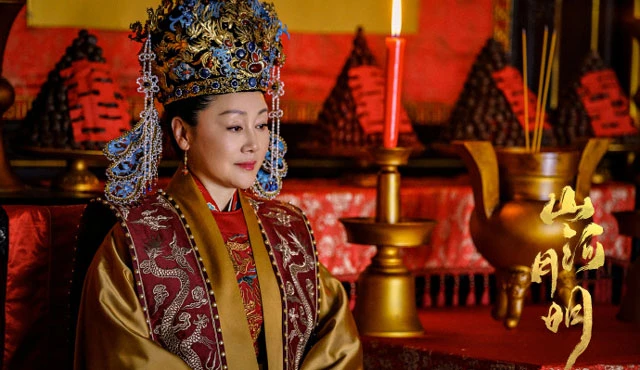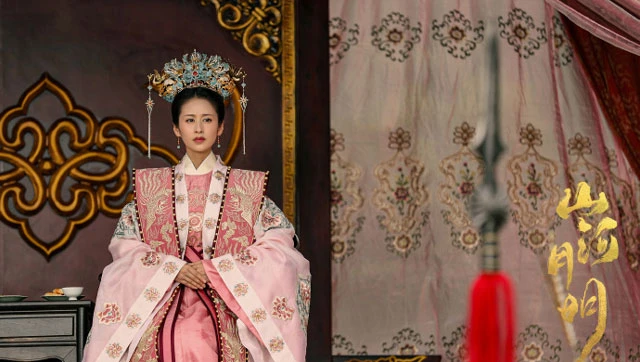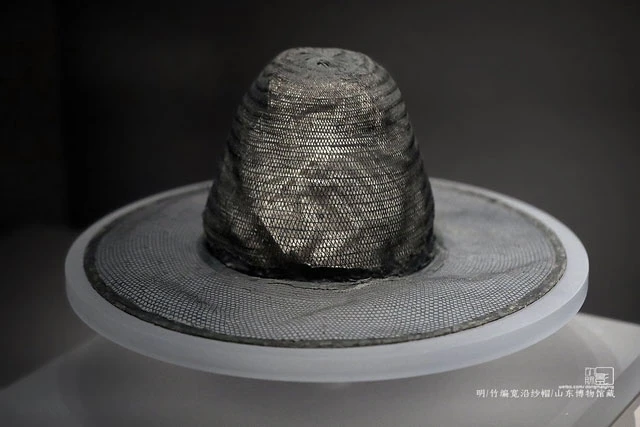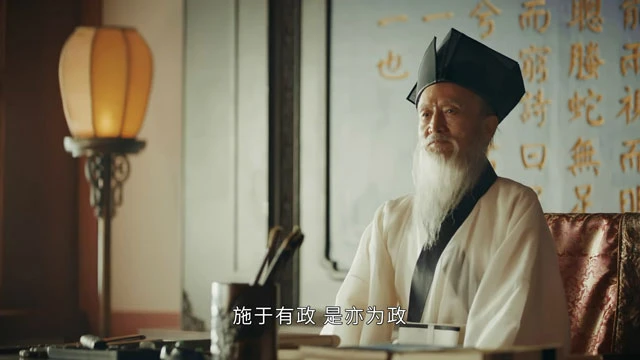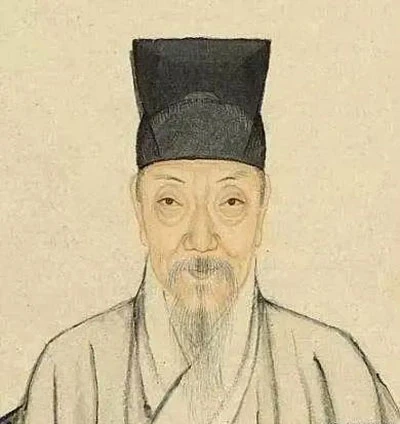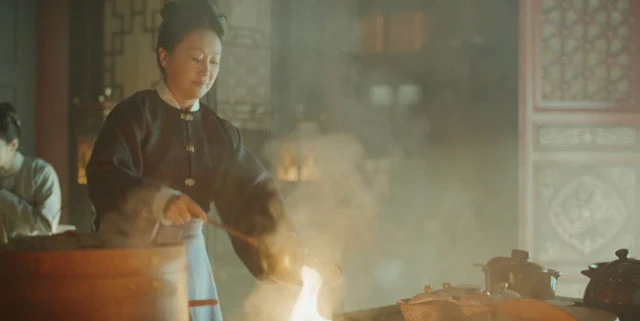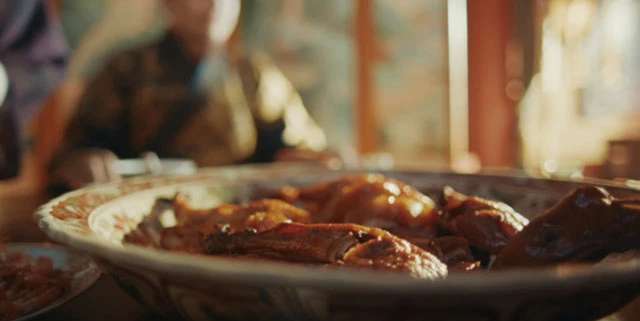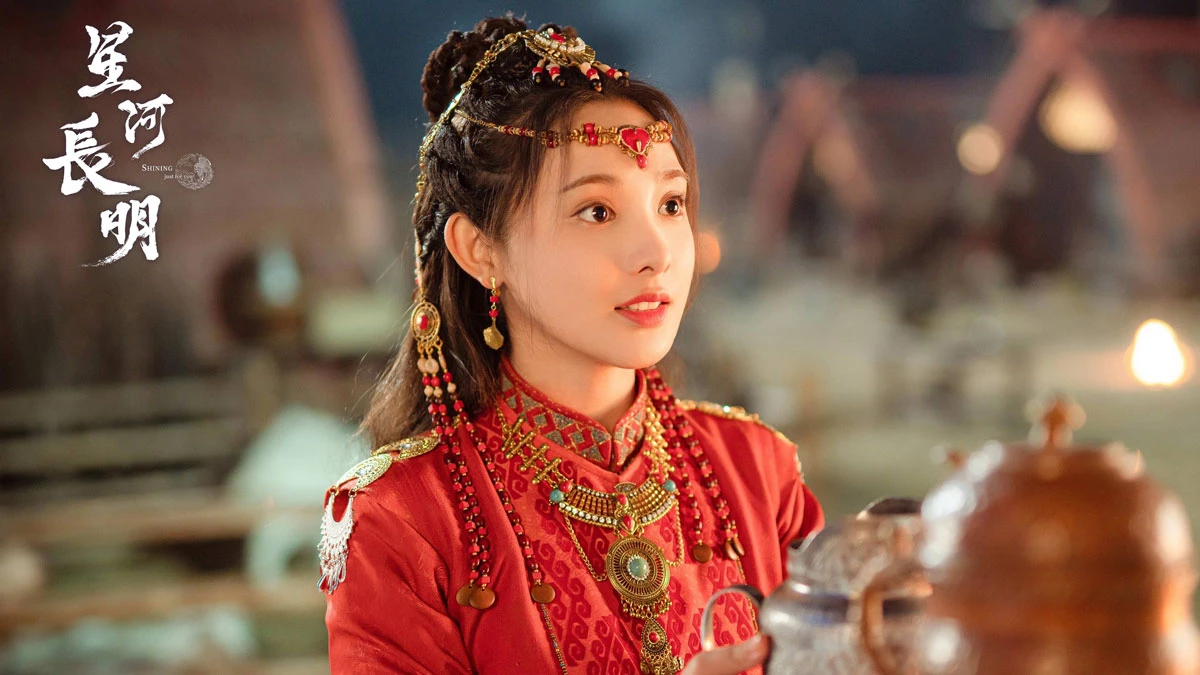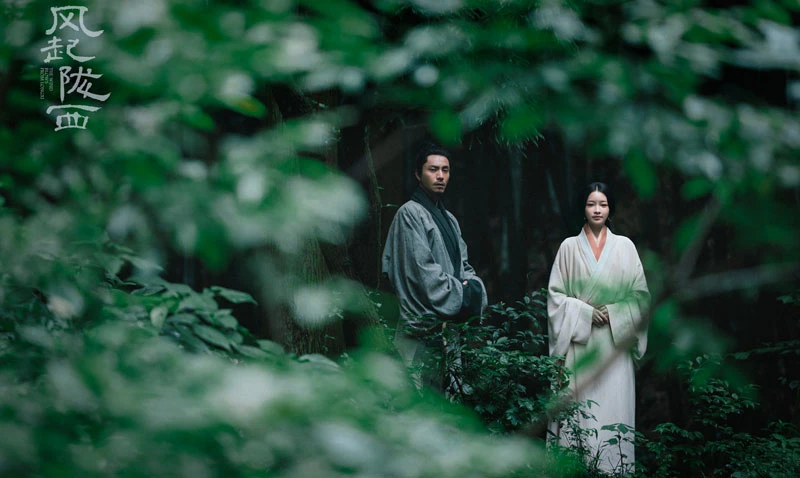Drama The Imperial Age (山河月明), which begins with the "Hongwu Northern Expedition" in the early Ming Dynasty, tells the story of Zhu Di, the fourth son of Hongwu Emperor Zhu Yuanzhang, who have experienced the battlefield at a young age, grows into a qualified military commander and mature politician with the company of Xu Da, and achieves greatness.
The Imperial Age has gained a lot of fans since it started, and viewers have fallen in love with the daily life of the imperial family, which is different from the serious royal atmosphere of previous historical dramas, describing it as "the happy life of the first family of the Ming Dynasty", and the elaborate hanfu costumes in the drama have also unfolded a realistic and detailed aesthetic painting of the Ming Dynasty.
Court Dress in the Ming Dynasty
During the Ming Dynasty, costumes also became more hierarchical, with strict rules on the types of clothing, accessories, and even colors that different classes could wear.
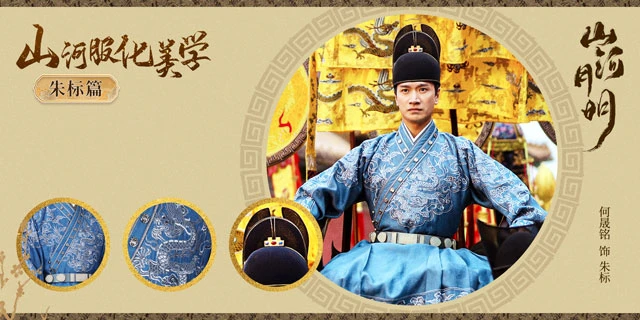
Zhu Biao, acted by Mickey He
In The Imperial Age, civil officials' uniforms were embroidered with birds, while military officials' uniforms were embroidered with fierce animals.
The official uniform system at that time stipulated that the court uniforms and ceremonial uniforms of civil and military officials were embroidered with different patterns according to different ranks. This system was also called the "Buzi", which was mainly used to distinguish between civil and military officials.

General Xu Da, acted by Zhang Feng Yi
The civil officials were quiet and gentle, so they wore birds as Buzi patterns to show their virtue; the military officials were brave and powerful, so they wore fierce animals as Buzi patterns to show their authority.
In addition to the difference in embroidery, the color of the court uniforms of the civil and military officials better reflects this sharp hierarchical difference.
There are many scenes in The Imperial Age that the civil and military officials attend court, wearing different colored uniforms and standing in different positions with reference to their rank.
In many Ming dynasty theme dramas, the civil official hat wings are horizontal, but in The Imperial Age crew according to the "Da Ming Yi Guan Zhi" records, that the early Ming Hongwu years until the Xuande years, officials of the hat wings are slanted down.
And the hats of the officials in the play are without Mao Zheng (帽正), because it only appeared around the end of the Ming Dynasty. These details, but also can be seen the crew's intention.
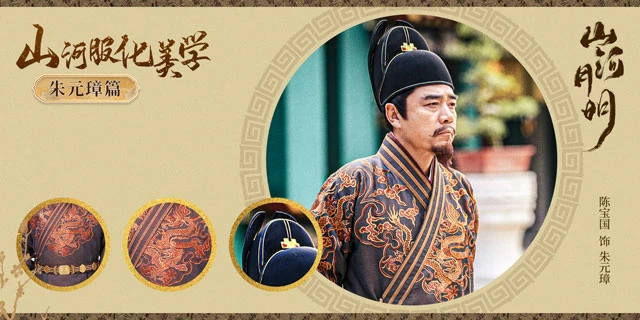
Hongwu Emperor (Zhu Yuan Zhang) acted by Chen Bao Guo
Similarly attentive to the emperor's closet, the team prepared at least six sets of clothing for the emperor, respectively, Mian Fu (冕服), Tongtianguan Fu (通天冠服), Pibian Fu (皮弁服), Wubian Fu (武弁服), Yanbian Fu (燕弁服), Chang Fu (常服), applied to different occasions.
The Ming Dynasty officials' families, Mingfu (female nobles), used the embroidered patterns on the Xiapei to show the difference in rank.
On the wedding day between Xu Miaoyun and Zhu Di, the bride wore Xiapei in pattern Di (similar in shape to a phoenix) and flower counterparts, which is consistent with the ancient records.
These typical symbols of Ming costumes flowed freely, creating a sense of immersion for the audience and paving the way for a scene as if the early Ming Dynasty was within reach.
Folk Costumes of the Ming Dynasty
Compared to the court's hierarchical dress system, Ming folk fashion was much broader.
Damao (大帽, a kind of traditional hat) was popular for men at the beginning of the Ming Dynasty, which was reflected in the drama "Royal Feast" set in the Yongle era.
Damao is one of the important hats of Ming men, not only ordinary people, even the emperor would wear, it is also important formal wear for men in Ming Dynasty, close to the ceremonial hat property.
Damao often as a reward to the surrounding tribes and vassal states. This hat form, called Fan Yang Li (范阳笠) in the Song Dynasty, and Bo Li Mao (钹笠帽) in the Yuan Dynasty, its brim is flat and more than wide, has a top decorated with flower color, flower color to distinguish the official position.
But Damao's popular time is not long, instead of the wave after wave of Jin (巾) trend. Because the soft scarf is easy to use and gets the literati's push, it became a fashion item.
The ancient book "Jinling Wangshi" recorded a story that during the Ming Dynasty, there was a Taoist temple in the west of the present-day Wang Jin Market (a place in Nanjing).
One day, Zhu Yuanzhang visited this place in disguise, and saw a Taoist priest concentrating on knitting a kind of net he had never seen before, the style was quite novel. The Taoist priest introduced that this was a Wang Jin (网巾, net scarf), which could keep the hair neat and clean after wearing it, even in windy or rainy weather.
Zhu Yuanzhang greatly appreciated it, then asked the country to implement. After that, the street in front of this Taoist temple was turned into a professional market for the net scarfs, and people came here to buy net scarfs incessantly, so folk called this place Wang Jin Market, and the name has been used until now.
The folk legend also has a Confucian scholar named Yang Weizhen, who once offered a kind of hat to Zhu Yuanzhang and named it "Si Fang Ping Ding Jin (四方平定巾)", which meant peace in the country and the pacification of war. Therefore, Zhu Yuanzhang sent an edict to the whole world and set it as a special hat for scholars.
The popularity of the headscarf, but also reflect the prosperity of Nanjing textile industry in the Ming Dynasty. History records that there were more than 100 industries in Nanjing at that time, and the most developed was the silk weaving industry and related industries.
Silk weaving industry is very fine division of labor, the Ming Dynasty in Nanjing has a special agency silk for the court. In its heyday, Nanjing's silk and satin industry had 30,000 looms, and no less than 100,000 producers.
Cloud Brocade is the most characteristic of Nanjing textiles. At the same time, the textiles from Nanjing were the most popular goods, not only the royal family used Nanjing's textile tribute, but also the nobles were proud to wear Nanjing's textiles.
Keeping the real daily life in the serious history
If we want to praise the costumes and props of a historical drama, in addition to its exquisiteness and restoration as the assessment standard, we should pay more attention to whether they can match the logic of the plot and show the economic and humanistic style of the time. A combination of rationality and historical temperature is a must for every historical drama.

Young Xu Miao Yun acted by Fortuna Yu
The costumes of the characters in The Imperial Age all change according to the scenes. Unlike the gorgeous and elaborate dresses at weddings and courthouses, there are also everyday clothes that are worn in everyday life. Compared with the elegant dresses, the casual clothes in the drama are simple and natural.
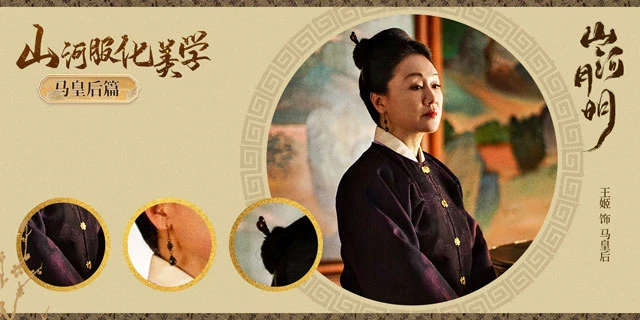
Empress Ma acted by Heidi Wang
In the first episode, Empress Ma wears Aoqun and a wooden hairpin, cooking for Zhu Yuanzhang personally. This may not match the dignified status of the Empress in other dramas, but it is consistent with the Empress Ma recorded in the history books, and such a scene appears in the drama as if history has reappeared.
Not only that, delicious roast goose, rough soles, thick baklava, and other pro-people elements can be seen everywhere in the drama.t immediately draws the distance between history and the present.
These specific props in The Imperial Age make historical figures such as Zhu Yuanzhang and Xu Da more three-dimensional, no longer flat and thin characters in history books. It's as if these everyday props injected soul into the characters, and the audience is no longer looking over their shoulders at those Ming Dynasty historical figures.
As the subject matter of historical dramas becomes more and more extensive, viewers have a deeper understanding of traditional culture, the old model can no longer meet the aesthetic needs of the audience, and the obsession with the high degree of restoration of costumes and decorations to the neglect of the plot logic is gradually not recognized by the public. The Imperial Age has returned to the "integration of costumes and props with the plot", providing new ideas for the production of historical dramas.
